Tourists highly appreciate Roman cuisine, thanks to the variety of delicious dishes based on simple and genuine ingredients. First courses, such as carbonara, amatriciana or cacio e pepe, are known and cooked worldwide. On the other hand, other specialities, such as artichokes, are related to seasonality. In this article, you can discover some typical Roman dishes, from starters to desserts.
Table of Contents
Traditional Roman starters
Typical Roman hors d’oeuvres are a veritable explosion of flavours and colours, perfectly representing the capital’s traditional and authentic cuisine. Based on vegetables, fish or meat, they can be simple appetisers or more complex preparations with seasonal ingredients.
PLAN YOUR TRIP TO ROME
Save money on entrance fees and transportation costs with the Roma Pass. This City Card offers free entry to two attractions, as well as discounts at other museums and archaeological sites, including the Colosseum, the Roman and Imperial Forums, the Capitoline Museums, the Ara Pacis and other must-see.
To stay connected in Italy, remember to buy an Airalo eSim online, with data and phone coverage for your trip to Rome.
Popular typical Roman starters are tasty bruschetta topped with garlic and oil or tomato and onion, panzanella, stuffed tomatoes, artichoke tart, a savoury pie made with fresh artichokes and Roman pecorino cheese, and marinated anchovies. An antipasti platter can also include potato croquettes and supplì, usually eat alone as street food.
The typical Roman cold cut is porchetta, made from pork roasted with garlic, rosemary and other flavourings. It has a unique and unmistakable flavour. Roman porchetta is best enjoyed hot, cut into thin slices. It is usually served in a sandwich or on a plate accompanied by baked potatoes or seasonal vegetables.
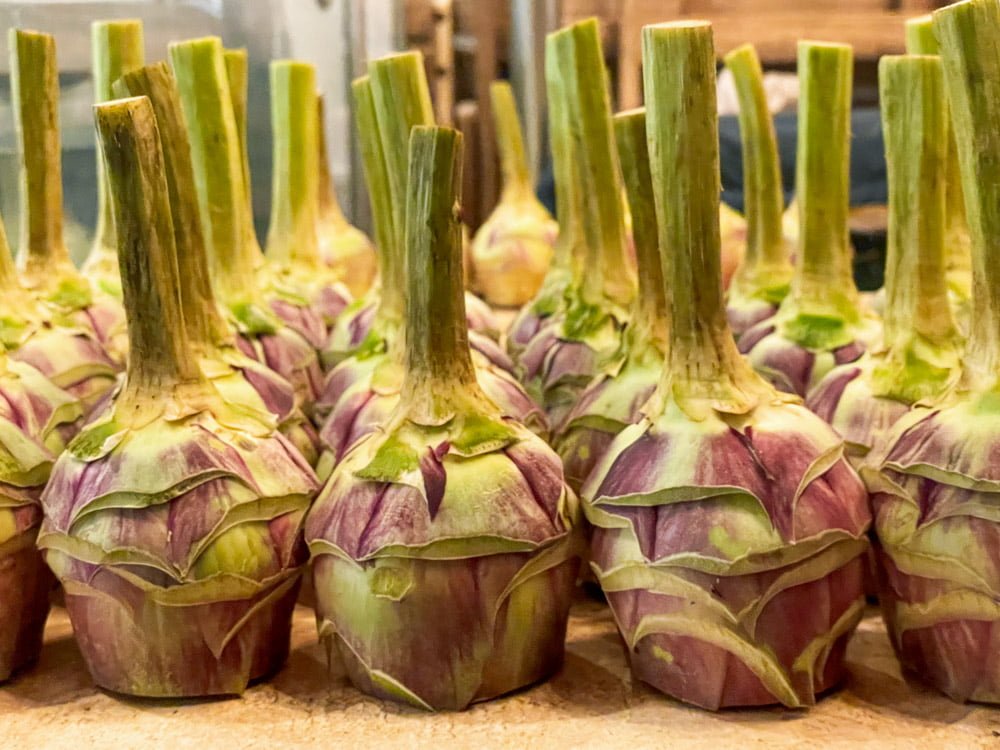
Roman pasta dishes: cacio e pepe, carbonara and amatriciana
The first courses of Roman cuisine are among the most famous and appreciated worldwide, thanks to their incredible taste. Among the typical Roman first courses, pasta alla carbonara, pasta all’amatriciana and pasta cacio e pepe certainly stand out.
Pasta cacio e pepe is a very easy and quick preparation based on Roman pecorino cheese and black pepper. The pasta sauce is a tasty cream cheese prepared with pasta cooking water and freshly ground black pepper. This dish represents Roman cuisine at its best – simple, tasty and with an authentic flavour.
Another iconic dish of Roman cuisine is pasta all’amatriciana, which is originally from the small town of Amatrice. This recipe includes tomato sauce, guanciale (a cut of pork similar to bacon), Roman pecorino cheese and chilli pepper. Pasta all’amatriciana is tasty and spicy, with an intense flavours.
Pasta alla carbonara is a rich and creamy dish with eggs, bacon, Roman pecorino cheese and black pepper. Its origin is uncertain, but it seems that the recipe dates back to the end of World War II. It was prepared with food rations provided by American soldiers. Since then, pasta alla carbonara has become popular in Roman cuisine. However, it is sometimes re-proposed in a less orthodox way, with cream or bacon instead of lard, arousing the ire of the Romans.
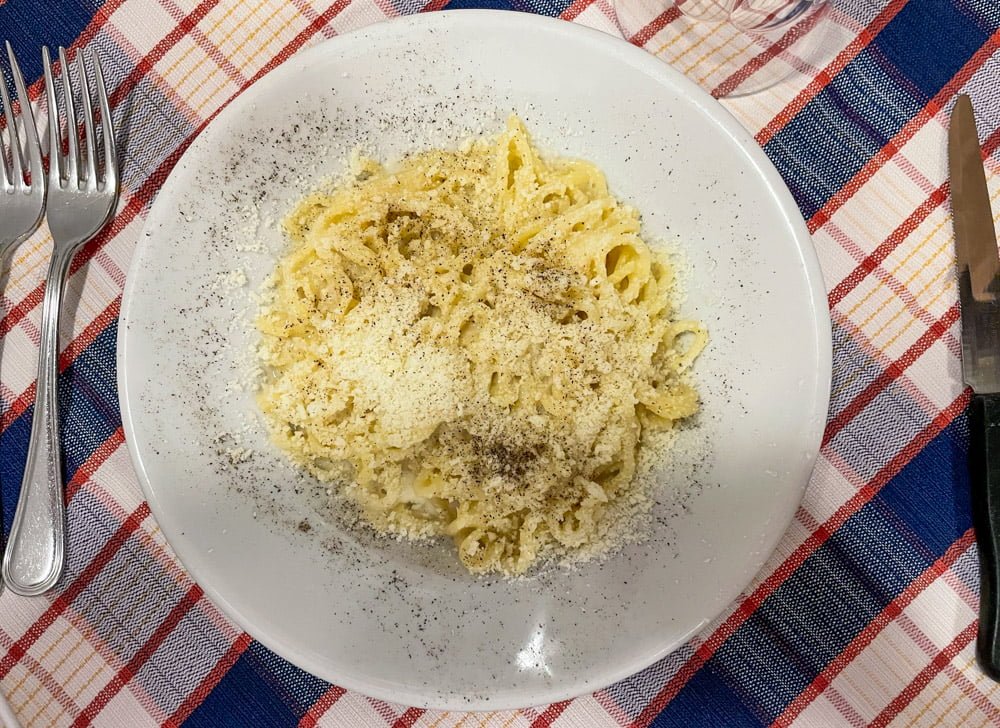
Roman-style pizza: differences with Neapolitan pizza
Roman-style pizza is a variety of pizza that differs from Neapolitan pizza in shape and consistency. Also called scrocchiarella, Roman pizza is generally thin and crispy. Neapolitan pizza is instead softer and thicker, with a raised rim.
The basic toppings of the two types of pizza are pretty much the same, with mozzarella, oil and salt added to the tomato sauce, as well as any other toppings. However, the authentic Neapolitan pizza only includes margherita and marinara.
Honestly, I prefer the Neapolitan pizza. Still, the Roman-style pizza boasts many admirers. You should try both when in Italy and decide whether you prefer. Although different from Neapolitan pizza, Roman-style pizza is a must-try dish to discover the capital’s traditional cuisine.
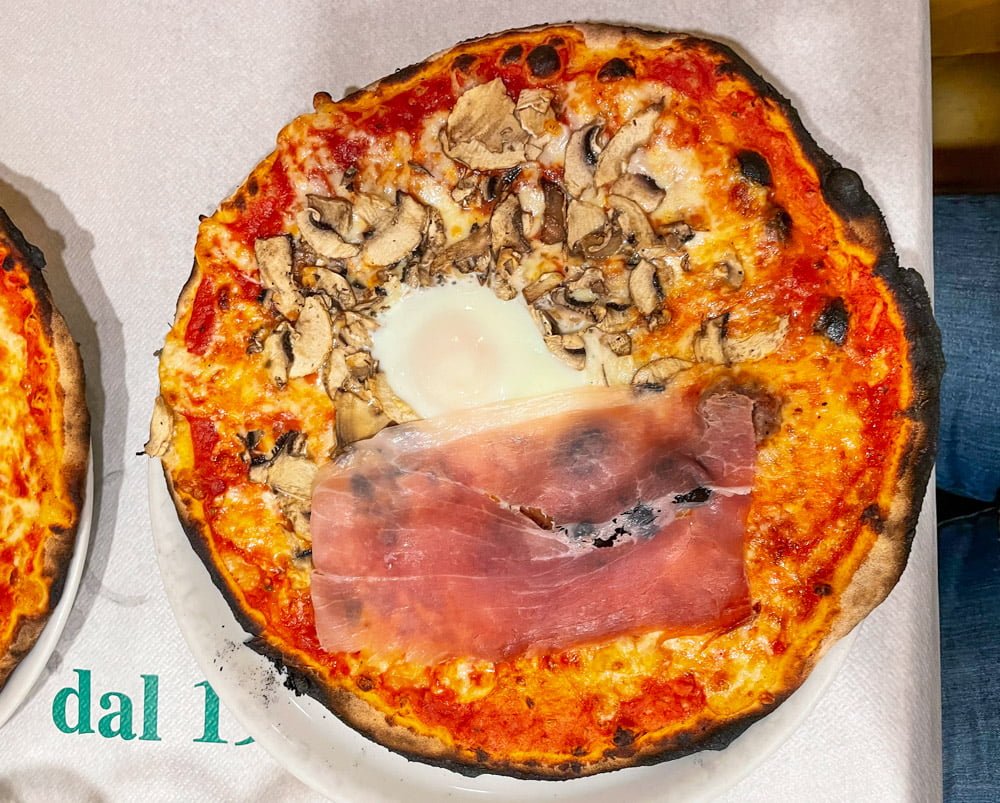
Traditional Roman main courses: abbacchio, saltimbocca, coda alla vaccinara and offal
Roman cuisine offers many tasty and traditional main courses. Among these, saltimbocca alla romana and coda alla vaccinara certainly stand out.
Abbacchio, a lamb slaughtered very young, is one of the most popular meats in Roman cuisine. It is the protagonist of many recipes for its tender and pinkish meat. It is often prepared in the oven and accompanied by potatoes.
Saltimbocca alla romana is a simple but tasty meat dish based on slices of veal covered with a sage leaf and a slice of raw ham. The meat is cooked in a pan with butter, oil and white wine until soft and succulent. The name saltimbocca literally means that the dish jumps by itself in the mouth.
Coda alla vaccinara, on the other hand, is a very hearty and richly flavoured dish prepared with beef tail and vegetables. This dish has popular origins and was often prepared by vaccinari, the butchers who cut the meat. The tail is cooked for a long time with celery, carrots, onions, bacon, red wine and tomato sauce until it becomes soft and separates easily from the bones. The result is an intense and full-bodied dish, perfect for the colder months.
Offal: from poor dish to gastronomic delight
In Rome, there are many traditional recipes using offal, once considered the less noble parts of animals and consumed by those who could not afford more valuable cuts. Today, on the other hand, offal is a sought-after dish because it is challenging to find cooked to perfection in restaurants.
Among the best-known offal recipes in Rome, quinto quarto includes several types of offal, including lungs, heart, tripe, sweetbreads, liver, spleen and tongue. Roman tripe is a meat dish with a strong flavour, cooked with bacon, Roman pecorino cheese, carrot, celery, onion, tomato, white wine and spices.
Roman side dishes and salads: puntarelle and cicoria ripassata
The Roman cuisine is also famous for its simplicity and authenticity in the side dishes and salads. Among Roman cuisine’s most famous side dishes are puntarelle and cicoria ripassata.
Puntarelle is a vegetable with long, thin leaves and a bitter taste, mainly used for salads. Once cleaned and cut, puntarelle are soaked in cold water and seasoned with oil, vinegar, salt and chopped garlic. The result is a fresh and intensely flavoured side dish, perfect for meat dishes.
On the other hand, sautéed chicory, known as cicoria ripassata, is a hot side dish made from finely chopped chicory cooked in a pan with garlic, oil and chilli pepper. Cicoria ripassata, sometimes served as an appetiser, usually complements grilled meat or pasta dishes. Its robust and bitterish flavour goes perfectly with the strong taste of the meat.
Roman sweets and desserts: ricotta and sour cherry tart and maritozzi
In addition to savoury dishes, Roman cuisine also features traditional desserts. Among the best-known are maritozzi and ricotta cake.
The maritozzi are soft and fragrant cakes made of leavened dough, filled with whipped cream and sultanas. Originally, maritozzi were devoid of the creamy filling, and the dough was enriched with candied fruit, raisins and pine nuts, while today they are served everywhere just with cream, to the delight of the sweet tooth.
Ricotta cakes are another traditional Roman dessert with a creamy ricotta filling. Among the variants involving the addition of other ingredients, those with chocolate and sour cherries, a type of cherry similar to black cherry, are delicious.
The ricotta and chocolate tart involves the addition of dark chocolate to the ricotta cream, which gives the cake an intense, mouth-watering flavour. The crunchy shortcrust pastry combines perfectly with the creaminess of the chocolate ricotta cream, creating a perfect balance of flavours.
The ricotta and sour cherry tart, on the other hand, features the addition of sour cherries in syrup to the ricotta cream. The sour cherries, typical of the Lazio region, give the tart a sweet and sour flavour, perfect to end a meal or as a breakfast dessert. The version of ricotta and sour cherry tart you find in the Jewish quarter (Ghetto of Roma) is the best, in my opinion.
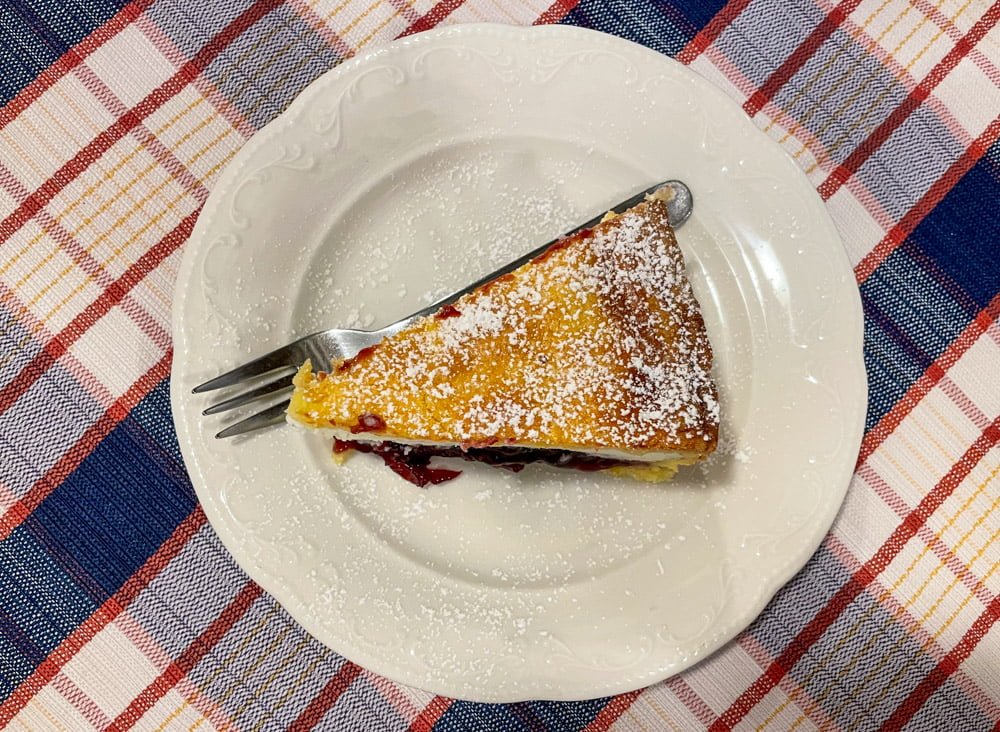
Roman cuisine’s street food: croquettes and supplì
Roman cuisine offers also delicious street food, as croquettes and supplì. Potato croquettes, also called crocchè, are fried potato balls made of mashed potatoes and sometimes filled with cooked ham and mozzarella or other ingredients. Croquettes are a classic street food of Roman cuisine, perfect for a quick lunch break or an aperitif with friends.
Supplì, on the other hand, are very similar to Sicilian arancini, but smaller. They are croquettes made of rice with a heart of tomato and mozzarella sauce, dipped in flour, egg and breadcrumbs, and fried in hot oil. You can enjoy supplì in their traditional way or in more creative versions with salt cod or various cuts of meat.
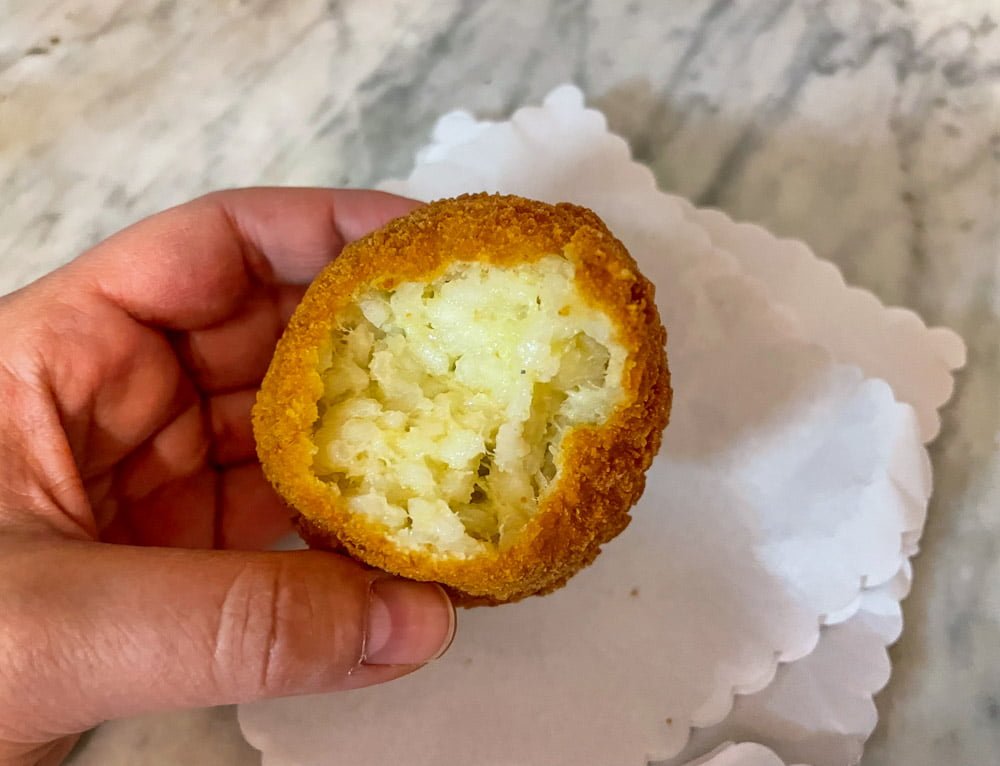
To know Roman cuisine, you should try everything from appetizers to desserts, including street food. Don’t miss pasta dishes like cacio e pepe and amatriciana, and give a try to main courses like coda alla vaccinara.
Sampling the traditional dishes of Rome is a great way to immerse yourself in the city’s history and culture, enjoying each bite as an authentic culinary masterpiece. You could even do so while taking in the breathtaking views of the magnificent monuments and Roman ruins.
Roman cuisine provides a unique and unforgettable gastronomic experience. Please share your favourite dishes in the comments and why you like them.
